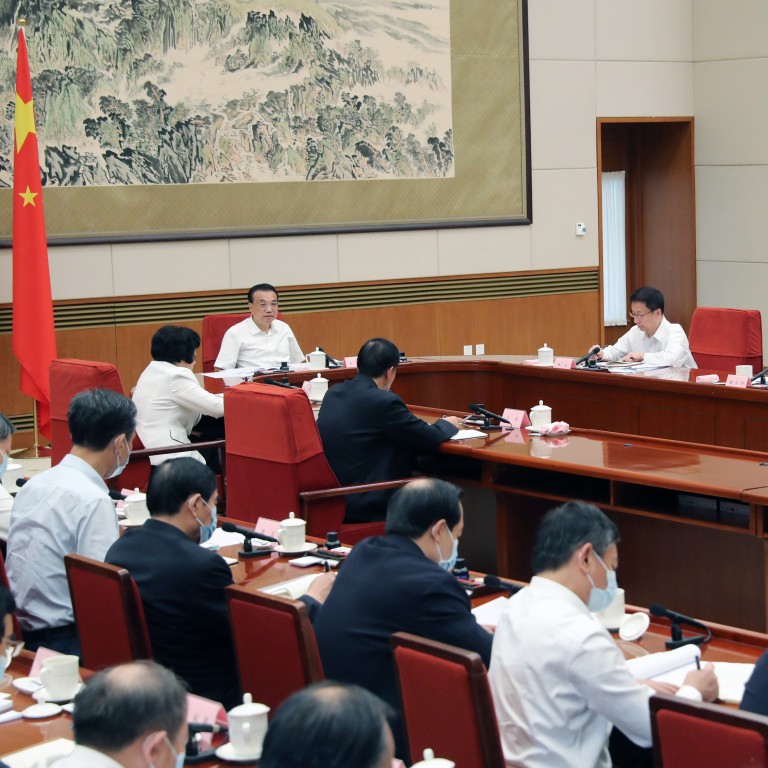
China fighting ‘uphill’ battle to revitalise northeast rust-belt in latest bid to transform former industrial heartland
- Premier Li Keqiang, three vice-premiers and the head of the country’s state-owned enterprises watchdog attended a meeting this week focused on the northeast rust-belt
- Combining the provinces of Liaoning, Jilin and Heilongjiang, the region of 99 million has recently endured sharp declines in revenue and weak economic performance
China has conceded it faces an “uphill” battle to revitalise its northeast rust-belt, but Beijing underlined its desire to boost the economic transformation of the former powerhouse by sending Premier Li Keqiang, three vice-premiers and the head of the country’s state-owned enterprises watchdog to a meeting in Beijing this week.
But at a high-profile meeting on Monday chaired by Premier Li, the State Council approved the region’s 2021-25 revitalisation plan, together with the high-quality development plan for Liaoning’s coastal regions and a new regulation on special transfer payments, although no planning or implementation details were provided.
Beijing did vow to boost local enthusiasm to enhance development, continue to increase central government funding and to start “partnerships between regions” to aid revitalisation, according to a report of the meeting released by the official Xinhua News Agency on Tuesday.
Northeast China is of an important strategic position in the national development … Its revitalisation is still in the uphill stage
“Northeast China is of an important strategic position in the national development … Its revitalisation is still in the uphill stage,” said Li.
The meeting was also attended by vice-premiers Han Zheng, Hu Chunhua and Sun Chunlan, as well as State Councillor Wang Yong, who is in charge of supervising the country’s state-owned enterprises.
“The economic transformation of the northeastern region has been an old headache for decades. For the purpose of common prosperity, China must bite the bullet. It’s just a matter of time,” said Wang Jun, chief economist for Zhongyuan Bank.
“Special measures or policies are needed to generate quick results,” he added, comparing the challenge to the country’s poverty reduction model. However, the region should also actively explore deeper-level reforms.”
Last week, the State-owned Assets Supervision and Administration Commission, which oversees the country’s 97 largest state-owned enterprises, unveiled a plan to pair 53 government-owned enterprises with 111 firms in the northeastern region to help industrial upgrades and improve management.
As part of the plan, the state assets watchdog will focus on eight tasks, including supply chain cooperation, joint technological innovation and industrial upgrade coordination, according to deputy director Weng Jiemin.
On Friday, state-owned Ansteel Group announced its merger with Bengang Group, which was owned by the Liaoning provincial government, making it China’s second-largest steel producer after Baowu Steel Group.

01:51
First made-in-China aircraft carrier, the Shandong, enters service
Liaoning, home to the state-owned enterprises that produced China’s first batch of fighter jets and aircraft carriers, reported a rare economic contraction of 2.5 per cent in 2016, having admitted to altering data in previous years.
It registered a two-year average growth rate of 2.8 per cent in the first half of this year, with only the coronavirus epicentre province of Hubei registering a lower figure among the 31 provincial-level jurisdictions. Its economic size was also ranked 18th, down from 15th in 2019 and eighth in 2003.
The three northeastern rust-belt provinces saw their combined share of the national economic output fall to 4.6 per cent in the first half of 2021, down from 5.1 per cent in 2019 and 11.1 per cent in 2003, according South China Morning Post calculations.
Beijing’s policymakers have paid particular attention to the region’s struggles, especially after tensions with Washington raised its importance as a major supplier of grain, military equipment and technological research.
“The fall of the growth rate in northeast China is largely owing to its economic structure,” said Zhang Guobao, the former head of the revitalisation office at the National Development and Reform Commission between 2003-11, in a speech in September 2017.
The 15-nation RCEP was signed in November and includes the 10 members of the Association of Southeast Asian Nations (Asean) plus China, Japan, South Korea, Australia and New Zealand. By eliminating tariffs on 91 per cent of goods, the RCEP will create a free-trade zone covering nearly one-third of the world’s economy, trade and population.

